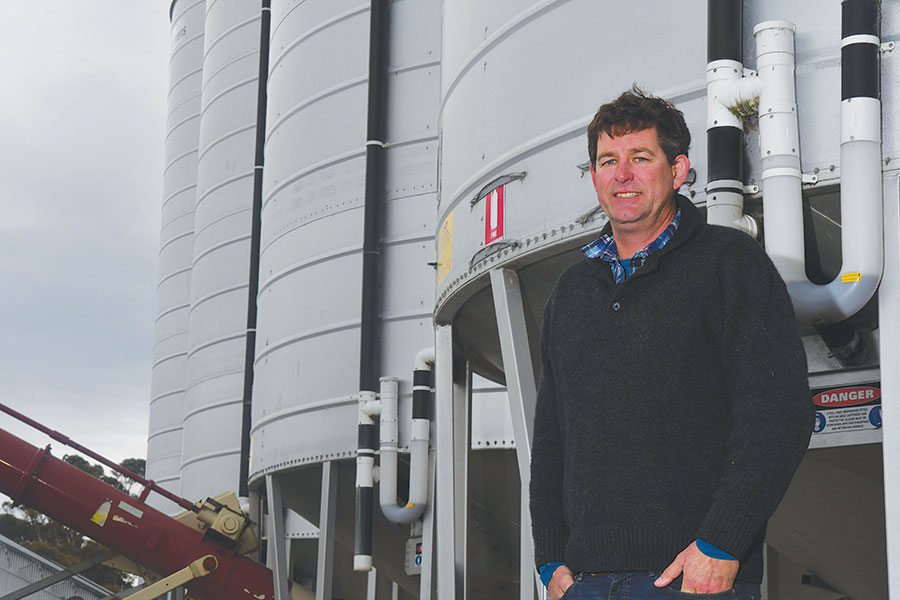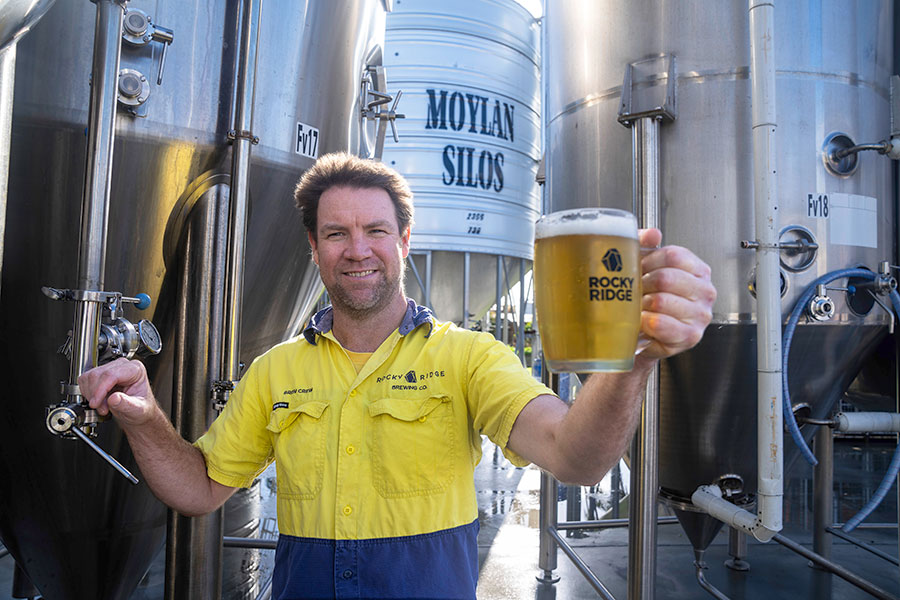On-farm grain storage is playing an increasingly important role in cropping and other grain-related businesses. But among the many benefits, there are also challenges. Here, two growers and a brewer share their insights into how they are managing storage on-site – and what advances they would like to see in the future.
Tristan Nitschke
Tristan Nitschke and his family have about 10,000ha under crop across three aggregations on the Western Downs. They grow wheat, barley and chickpeas in winter, and sorghum and occasionally millet and cotton in summer.
With a collective 11,000-tonne capacity, their storage system can hold around one-third of the grain they produce each year and consists of around 50 old and new conical-based silos varying in capacity from 100 to 280t.
What is the greatest benefit of storing grain on-site?
I’ll give you two. First, flexibility with marketing and being able to segregate and manage the quality you deliver, be it around high moisture, protein levels or screenings.
The other big benefit is at harvest, when you’re under the pump and the trucks can’t keep up, you’ve got somewhere to put the grain and the machinery can keep moving.
What is the greatest challenge?
The greatest challenges around storage have been managing quality and insects, but that’s been largely alleviated with our automated aeration system that consistently monitors the atmosphere and delivers the coolest, driest air into the silos.
What is your grain storage R&D wish list?
I think some sort of automated insect detecting device would be really valuable because the only real way to do it now is to physically climb up the silo, take a sample and sieve it, or use insect traps. So, I’d like to see some sort of monitoring system developed that could alert you when there are insects present.
Andy Tucker
Andy Tucker runs a 100 per cent cropping enterprise on 3000ha in Maroona, south-west Victoria. He grows red wheat, white wheat, canola, faba beans and barley, depending on the season.
His 2500t capacity gas-tight sealable silos are generally filled and emptied twice a year and he has a 3000t capacity shed that can hold grain, fertiliser or machinery as required.
What is the greatest benefit of storing grain on-site?
The greatest benefit is harvest logistics in my business. On-site grain storage enables timely harvesting of the crops because I’m not relying on someone else’s (receival) site hours to dictate when we’re able to roll the headers.
What is the greatest challenge?
Managing workload and getting an adequate dollar return benefit for the investment and work required. In the last couple of years, in a higher interest rate environment, there’s not the cream there used to be. But that’s just business and it’s not just grain storage – it’s everything.
What is your R&D wish list?
I’d like to see the development of a new grain protectant that would be accepted by more markets. Products such as Conserve On-Farm and K-Obiol have been welcome, but if there was a new active ingredient that wouldn’t eliminate us from any market – that would revolutionise grain storage because it’s so easy to apply.

For Andy Tucker, on-site storage capacity ensures grain can be harvested in peak condition. Photo: Melissa Marino
Drew Hennessy
Drew Hennessy is the QA manager of Rocky Ridge Brewery. He says the logistics of storing single-batch malt on-site, to fulfil a mandate for environmentally sustainable beer, is not without challenges.
The boutique brewery was established by Hamish Coates and Mel Holland on Hamish’s family farm at Jindong, near Busselton in Western Australia.
What is the greatest benefit of storing grain on-site?
Our goal is to create a closed-loop brewery, where every part of the process is optimised for sustainability. It is about creating a responsible and efficient value chain from the farm to the glass.
We store malted grain on-site in one 20t and two 50t silos to ensure that single-origin malt is on hand for each single-batch boutique brew. The malt is sourced from local growers at ‘Tolga Farm’, who produce Certified Sustainable™ barley.
What is the greatest challenge?
The greatest challenge of storing malt on-farm is keeping the malt cool, dry and free of insects without the use of fumigants. Moisture levels are critical in malt and must be kept as low as possible to avoid spoiling.
What is your grain storage R&D wish list?
While we will continue to optimise the regulation of the carbon dioxide treatment, on our wish list for Rocky Ridge Brewery is refrigerated storage. This could significantly aid in reducing the temperature of stored grain and limit storage insects.

Drew Hennessy, QA manager of Rocky Ridge Brewery near Busselton in Western Australia. Photo: Evan Collis

























































